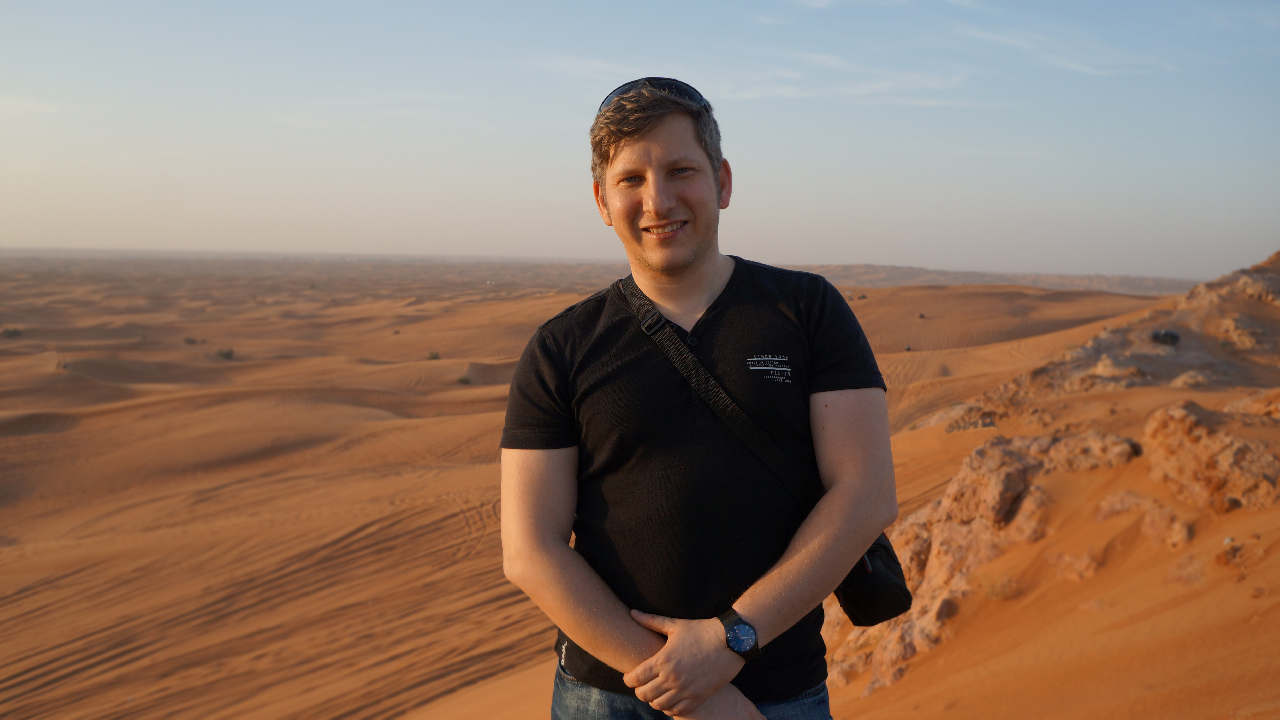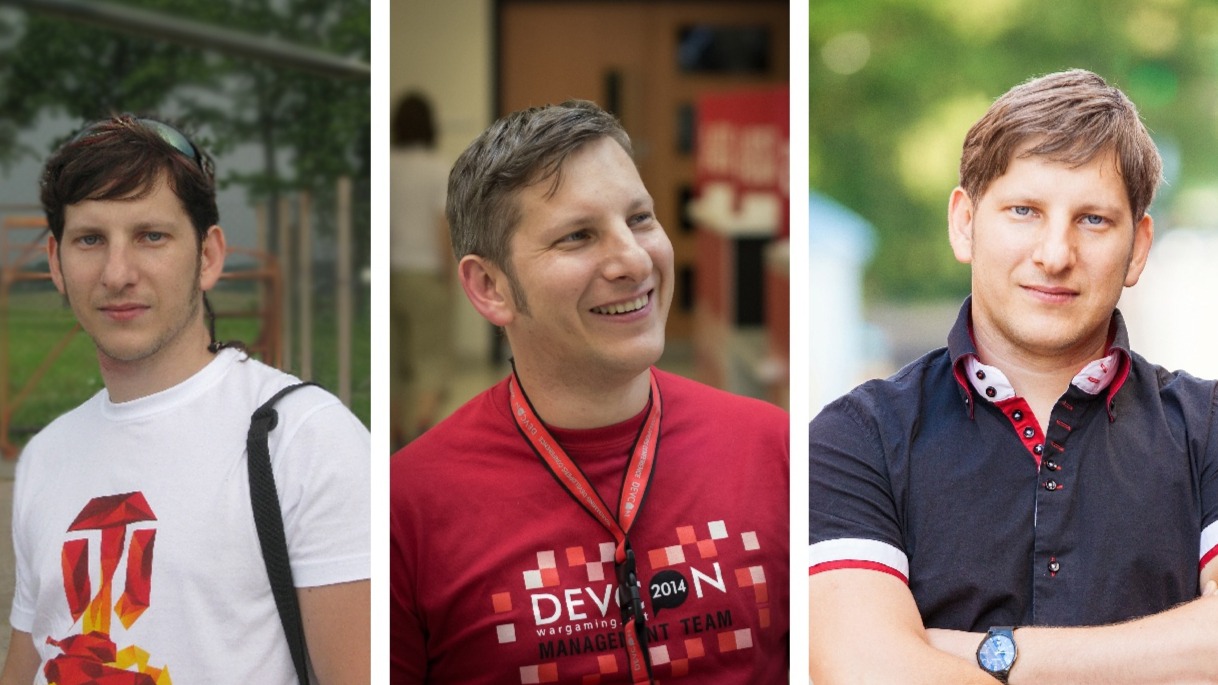10 years in Wargaming - from Developer to R&D Director
What do you do at Wargaming and how did you end up there?
.jpg)
I’m Wargaming’s R&D Director, and I’m responsible for the development process for all our R&D projects. When I joined Wargaming, it was before World of Tanks, and I was brought on to be a senior developer for our previous game, Order of War- I was tasked to bring multiplayer into the game. We built the multiplayer component of the game from scratch, and when we finished the project, I moved to lot of different areas in the company like event management, platform, and development. Since I established a technical background from these experiences, I was brought on to be a manager in R&D.
We don’t have our own development team in the department, so I’m responsible for coordinating the collaboration with different partner studios globally. My main responsibility is simply to develop a great product within the budgets that are set. In order to accomplish this, we need to carefully consider the right partners for the right products, and I take part in handling that process for the company.
How do we find the right partner for our projects?
We work with other departments within Wargaming like the Procurement and Development department to lock down the right partner. We create a process and different criteria for our projects and this helps us to determine what kind of partner we are looking for. Once we create our parameters, we do our due diligence to find the right fit from a short list of prospects with the assistance from different company experts.
The selection process comes with lot of questions so we discuss things with the potential studios, talk face to face, and try to understand the strengths and weaknesses of who we might collaborate with. We try to choose the best because we try to minimize the risk for both Wargaming and our potential partners. We want to create a strong partnership because we may want to work with the same partner for a different project in the future. For example, we have that same experience right now. We closed a project with a partner, but we started another project with the same partner because we liked the working relationship we had.
How do you determine that a partner will be a good fit for Wargaming and our projects?
Actually, there are several factors, but there are some important ones we watch out for. First is cost. Within any given project, we have a budgeted spend we need to stay within. Second is experience. When considering an external studio, we need to make sure that the team we pick is capable of handling design and scope of the project.
We need to ask ourselves, do they have experience in the fields we are looking for, and can they provide something new for us?
So in this case, their portfolio is important to look at to see if their experience aligns with our goals. Experience for the particular project and their reputation on how they’ve worked with other studios is also something important that we consider. It is impossible to make a real partnership if we just treat the job as a work for hire. The relationship needs to be in both party’s interest.
What project have you enjoyed working on the most?
If I’m being honest, I ‘ve enjoyed working on all the products. In every product I’ve worked on, I find something new and interesting to like-sometimes in different roles, sometimes in different areas. If you don’t like the product, it’s better to say no and start something new.
For example, I’m currently working on a project, it’s not for development, but for me, it’s great to learn the differences for a non-dev project in management and risk mitigation.
When you talk about development projects, it’s very difficult to say because I like all of them.
In your current role, what have you learned from the challenges you faced?
The biggest challenge I faced were the cultural differences. When I first started out at Wargaming, we were a small team, everyone knew each other, and it was essentially our family in Belarus; almost all of us were from one city. It was easy to communicate.
When we became a large international company, it changed a lot. We started working with people all around the world, and when I became a manager, at times, people within the team couldn’t understand each other. I couldn’t understand why certain people behaved in a specific way. For example, if I asked someone from my office to do something for me, they knew exactly what I wanted them to do, but if I asked someone the same thing from another office, their reaction was different. We knew every single person we brought into Wargaming was very skilled and smart, so why did we have this problem? It had to be a communication issue.
For me, it took some time to understand that our behaviors were different because of multiple factors like cultural differences between the different teams around the globe. When I started to look into this area and how to navigate around communication barriers between team members, it was extremely

interesting, and it improved our internal communications within Wargaming significantly. It took some time, but eventually, more and more people got to understand each other because we started to consider cultural differences when communicating within global teams.
So, what do you think is the most important part about being a manager?
My opinion is that the best managers are the ones that find the best people, and give them responsibilities they can do better than you. Additionally, your responsibility is to motivate and help your team to do their best.
As an R&D Director specifically, I need to know how to manage creative people. I think creative people, by nature, do not like restrictions and bounds, but in video games, creatives need to work with engineers. From experience, engineers are very structured, and like to make sure that the scope of a project does not get out of hand. So, I need to know how to balance that as a manager
Since you work with a lot of external teams, how do you balance creative vision and keeping the scope attainable for a project?
Most importantly, we try to give teams as many opportunities as possible, but we also help them structure ideas through process. We help them work through how to explain and pitch their ideas to different levels of people.
To that end, we created several templates to present all this information in the most structured way so that the creative directors for the projects know what they need to do. This helps creative directors work through if there is a market for a game, how to reach that market, and how to appeal to that market- because in the end, it’s still business, and we can’t move forward without a clear vision.
People usually don’t like the idea of process, but in this case it really helps. I have to convince teams that these processes will help them in the end, and I motivate them to do this rather than force them to do it because I don’t want to stifle that relationship we’re building with these partners.

What makes a good project pitch?
I think the most important thing about a good pitch is that it’s clear, and that anyone can understand what the business case is for the project without being part of any previous discussions. If you have that, everything will fall into place.
What’s your favorite memory from Wargaming?
The moment I realized World of Tanks became a global phenomenon. It was crazy. We knew we made a good game, but we didn’t realize the extent of success that the game would experience. At that point, it wasn’t just a game anymore, it became something really special.
In your opinion, what do you think is the future of gaming?
I think the future of gaming is the integration of more social features. I don’t know exactly how this is going to happen, but I see a growing trend in socialization within the space. I think the social aspect of games are important because globally, smart devices are everywhere, and most of the world is now connected through the internet. I believe, the more people interact within that space, the more people will come to expect social aspects within technology; gaming included.
So you’ve been in game development for 10 years now, how did game development start in Minsk?

When I started to work in software development, game development didn’t really exist in Minsk. We made a few programs here and there for companies, and you would consider them to be similar to our casual games today; a lot of them were educational. It was several companies, we didn’t call them studios at the time, who wanted to make games; games weren’t even their main business. For example, my first company focused on educational software, but at the same time we tried our talents at developing educational and card games; side projects for us.
At the same time, several people in Minsk knew they wanted to make games, like our CEO Victor Kislyi, and it started out as a hobby; it became so much more. So I guess, a lot of people that are in the gaming industry in Belarus right now, started out with this as a hobby. When the market grew up, it became easier to develop games.
Belarus is starting to be one of the largest IT spaces globally, and that comes from our history. When the country was still part of the Soviet Union back in the day, we produced big industrial mainframes, and because of this, we have a big math and IT education curriculum in Belarus. That’s why we have a really good IT industry. With Wargaming, the video game industry is growing in Belarus, and the background in IT in the country has helped us grow into this space.
The video game industry in Belarus is definitely younger than in Western countries. But, we are growing extremely fast, and Wargaming’s success shows it.
See our job opportunities here.